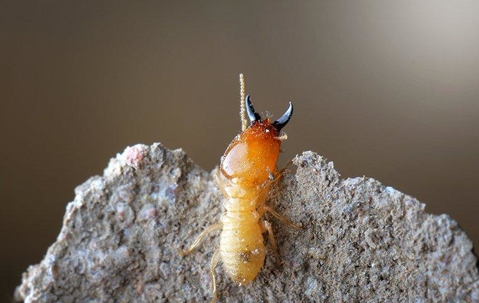As a homeowner in Dallas, you probably understand the struggle of keeping pests out of your house. Most of these pests are the ones you can see, making it a little bit easier to do something about the issue. Unfortunately, when it comes to termites, people rarely know they have an infestation until it’s too late, which is just one reason why the more you know about termites, the better chance you’ll have at saving your home (and your money).
Termite Destruction In Dallas
There are a variety of termite species that can invade Dallas homes, but the most common is the subterranean termite. This particular species loves to feed on moist or rotting wood that has been exposed to prolonged moisture damage. In nature, this is a benefit. They break down organic matter like fallen trees in the forest. But in a home, they are definitely not a benefit!
Termites' love for rotting wood makes them one of the most destructive and efficient wood eaters on the planet. These tiny termites never sleep, so they can eat enough of your home’s wood to cause over $3,000’ worth of damage in 18 months, on average.
While this may seem like a long time, subterranean termites can actually go unnoticed for years within your walls. Since worker termites are so hard to spot, you should get familiar with the other signs of a potential termite infestation. These include:
- Mud tubes stemming from the bottom of the inside foundation walls
- Damage to visible wood in the yard near the ground
- Shed wings of swarmers termites
- Tightening of doors and windows
- Clicking noises within the walls
Noticing these signs early can save you a ton of money, but only if you get professional help immediately. If you try and get rid of termites yourself, it is likely that you will not get the entire infestation, and their destruction will continue.
Proper Prevention Practices
If you’re fortunate enough to not have any signs of termite damage, then you should concern yourself with prevention. Since these pests love to feed on wood that’s been exposed to moisture damage, a large portion of your prevention plan should involve limiting your moisture issues. The best ways to manage moisture problems in and around your house include:
- Utilizing a gutter and downspout system to expel rain runoff from the house
- Monitoring your pipes carefully for leaks
- Mowing the lawn regularly
- Using a dehumidifier in your basement and crawlspaces
Along with moisture control, limiting termite accessibility is an important step. Subterranean termites get their name from their ability to tunnel just below the soil to infiltrate your home’s foundation, so preventing the soil’s contact with the structure can limit their accessibility. Start with a buffer of pine straw, gravel, or rubber mulch along the perimeter of the foundation. Usually, you’ll get the best results with 12-18” of these non-wooden buffer substances.
Another way to limit accessibility is to store firewood (which will attract termites quickly) away from the house and off the ground. Preferably, it should be stored in some sort of shelter that isn’t susceptible to termite damage. You should also clear the yard of debris as often as possible, as debris such as piles of leaves and sticks will create moisture pockets in the soil and provide termites with a tasty snack.
Unfortunately, you can do all of these things right and still end up with a termite infestation. These suggestions simply lower your chances of incurring termites, but nothing replaces the guarantee of professional assistance from the most experienced pest technicians in Dallas. Call Dynasty Pest Control today before termites cost you a lot of money. We are standing by to help!

